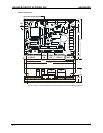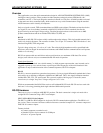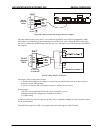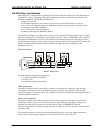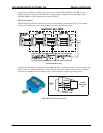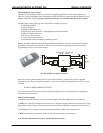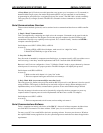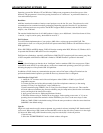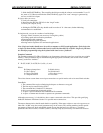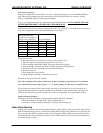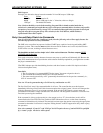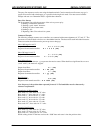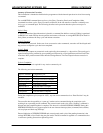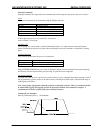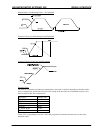
ADVANCED MICRO SYSTEMS, INC. SERIAL INTERFACE
22
3. Strike the SPACE BAR key. The controller should sign on with the software version number Vx.xx. If
not, enter a (^C) (Reset) and strike the SPACE BAR key again. The “reset” message is generated by
easi.exe, not the axis output.
If sign-on does not occur:
a. Verify all connections.
b. Insure that the SIN-8 or SIN-10 is in the “single” mode.
c. Check your comport set-up.
. .
4. Striking the ENTER <CR> key should result in an echo of “# “ characters, further indicating
communication is established.
In single mode, you can do a number of useful things:
• Assign “name” character (not necessary if using daisy chain)
• Tweaking speed and acceleration parameters
• Experimenting with commands
• Development of program sequences
• Storing motion sequences for non-hosted applications
Note: Single axis mode should never be used in a computer or PLC hosted applications. If the design has
a single axis then the daisy chain method can be used with either RS-232 or RS422. Single axis functions
are suited for programming using the keyboard with visual screen “feedback.”
Examine Command
The Examine command (X)<CR> will display a set of parameter values that were last stored into non-volatile
memory. These parameters may be modified using the appropriate commands, then stored in non-volatile
memory as the new “defaults.”
X K= 5/5, I= 802, V= 10370, D= 1, b=30, s, ¼, n=A
Where:
K= Ramp up/ramp down I= Initial velocity
V= Slew velocity D= Divide factor
b = Decay Threshold s= Slow decay (now)
¼ = Step Resolution n= Axis name
The values shown assume there are no input connections or special modes such as inverted limit switches.
Some Rules
1. The command line may be edited using backspace as characters are typed.
2. The line may be canceled using <ESC>.
3. The command line is limited to 15 characters.
4. Only one command may be entered per line.
5. A space is optional between the command and first number.
6. A space or comma must be used to separate two parameter commands.
Although not necessary, it is desirable to have a motor connected to the driver. This provides gratifying
feedback. Reference “Hardware Section” for specific motor connections.
The motor characteristics should match the drive capability. If the motor refuses to move in response to an
index like “+1000” steps, the control parameters may not be correct. This stalling manifests itself in partial
movements of the motor shaft and audible sounds. Insure that the load is not too heavy. Tweaking
parameters like motor current, velocities (I and V) and ramp slope (K) can usually coax the motor to action.



